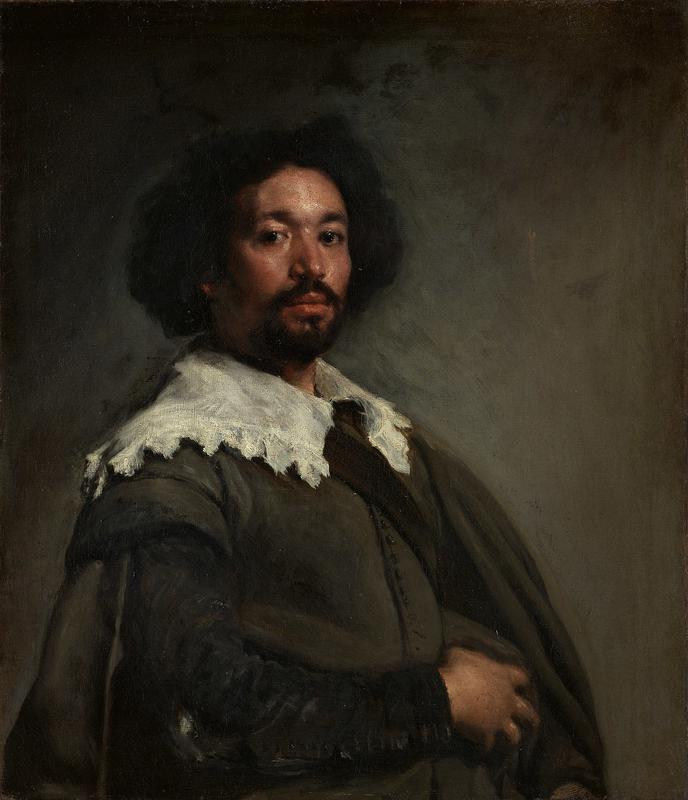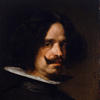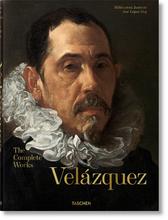More about Juan de Pareja
- All
- Info
- Shop

Contributor
Who was Juan de Pareja?
Most people who see this portrait by Diego Velazquez at New York’s Metropolitan Museum of Art probably have no idea. They might think Juan looks like a dignified señor of prominence, an honorable grandee who paid a pretty peso so this picture could hang over some conspicuous fireplace. (I’ve always thought that if Juan had been a millennial, this would be his graduation photo or worse, his LinkedIn picture.) Juan’s portrait certainly speaks to distinction but contemporary audiences may be surprised to hear is that he was the mixed-race son of a female slave and, consequently, Velazquez’s own slave and assistant.
Mic. Drop.
Velazquez, the esteemed royal court painter, depicted his slave? It was, in fact, fairly common for artists of the period to have slaves. Nevertheless, they never, ever painted them. But Velazquez wasn’t your typical artist. Despite his glitzy position, he did not shy away from portraying people of humble origins. He challenged the art canon at a time very few did, like choosing to depict an elderly woman cooking in Old Woman Frying Eggs and a lowly court dwarf in Sebastian de Morra. But Juan was not a mere peasant or a servant to the King; his master was Velazquez himself, which makes this picture, just like the artist-sitter relationship, extraordinary. Velazquez gave his subject as much respect as he would a comrade, resulting in a psychologically truthful portrayal. Audiences, ignorant of their association, can gaze at it and easily accept Juan as an equal.
But in life, Juan de Pareja was subservient and that reality will always somewhat taint this picture. (This is kinda like when people try to romanticize Thomas Jefferson’s affair with Sally Hemmings. If true love is akin to being a possession then fine…this is a 50 Shades world we live in now.) Velazquez probably treasured Juan but, just like in that horribly depressing Fox and the Hound, there was an irrevocable difference, a discriminating divide separating them. Despite being his assistant, Velazquez wouldn’t allow Juan to paint at first due to his position; he apparently was not “worthy” of the craft. Ugh, damn you Diego. Thankfully Juan, rebel that he was, showed his master the middle finger and painted anyway.
But the intimate nature of their relationship is quite palpable. Velazquez gives his portrait a familiarity that only a close companion could know. The painting is just too darn good. It says much about Velazquez the person, demonstrating him to be an enlightened but also imperfect individual and man of his time. And yet, although we can accurately speculate what Velazquez saw in Juan based on this personal rendering, we will never really know how Juan felt about Velazquez. It is probable he both deeply revered and resented him. To Velazquez’s credit, he did liberate Juan after finishing this work, allowing his novice to finally live out his dream of being a painter.
Today, Juan’s painting, The Calling of Saint Matthew, hangs at the Prado Museum in Madrid, an institution that houses many of Velazquez’s masterpieces. Their works share the same closeness and space their creators had. Only this time, they chill on equal footing.
Sources
- Terence Clarke. “The Soul of Juan de Pareja.” The Huffington Post. July 13, 2013. accessed April 11, 2017. http://www.huffingtonpost.com/terence-clarke/juan-de-pareja-velazquez_b…
- Jason Farago. “Velazquez’s Infinite World in a Handful of Portraits.” The New York Times. January 12, 2017. accessed April 11, 2017. https://www.nytimes.com/2017/01/12/arts/design/velazquezs-infinite-worl…
- The Metropolitan Museum of Art. “Juan de Pareja (1606–1670).” accessed April 12, 2017. http://www.metmuseum.org/art/collection/search/437869
Featured Content
Here is what Wikipedia says about Portrait of Juan de Pareja
The Portrait of Juan de Pareja is a painting by Spanish artist Diego Velázquez of the enslaved Juan de Pareja, a notable painter in his own right, who was owned by Velázquez at the time the painting was completed. Velázquez painted the portrait in Rome, while traveling in Italy, in 1650. It is the earliest known portrait of a Spanish man of African descent.
It was the first painting to sell for more than £1,000,000. At the time of the painting's purchase by the Metropolitan Museum of Art in 1970 they considered it "among the most important acquisitions in the Museum's history". The painting is on display at the Metropolitan Museum of Art in New York City.
Check out the full Wikipedia article about Portrait of Juan de Pareja














